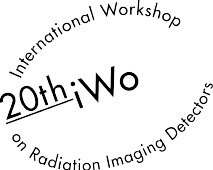Speaker
Description
In this presentation, we will report on the use of the MARS scanner equipped with the Cadmium Zinc Telluride (CZT) assembled Medipix3RX detector in Charge Summing Mode (CSM). We have looked at methods for optimising scanning protocols in a preclinical small animal spectral scanner that will translate to human scanning in the diagnostic energy range (20 – 140 keV).
We have used a MARS small bore scanner incorporating a CZT Medipix3RX camera and a 0.375mm brass or 2mm aluminium filtered poly-energetic x-ray source to simulate the expected absorption during human scanning. Different energy band selections were trialled for different applications in imaging. We have imaged gold nanoparticles targeted to ovarian and breast cancer cells. We have distinguished gout and compared DECT and spectral CT images, and various calcium based crystals found in common joint diseases. We have measured lipid content in fatty liver and quantify gadolinium uptake in human knee samples as a measure of cartilage health. We have also used MARS to measure bone density and structure of normal and osteoporotic human femora comparing DEXA, DECT, pQCT, and spectral CT. A post material decomposition assessment method based on the sensitivity (true positive rate) and specificity (true negative rate) of an individual voxel was used to generate a quantitative metric to characterize material misclassification.
Spectral CT is likely to play a major role in identifying and directing treatment for a range of inflammatory diseases. Metrics and methods for assessing errors in material identification and quantification are currently being validated using imaging protocols designed to be translated to human imaging when it becomes available.
